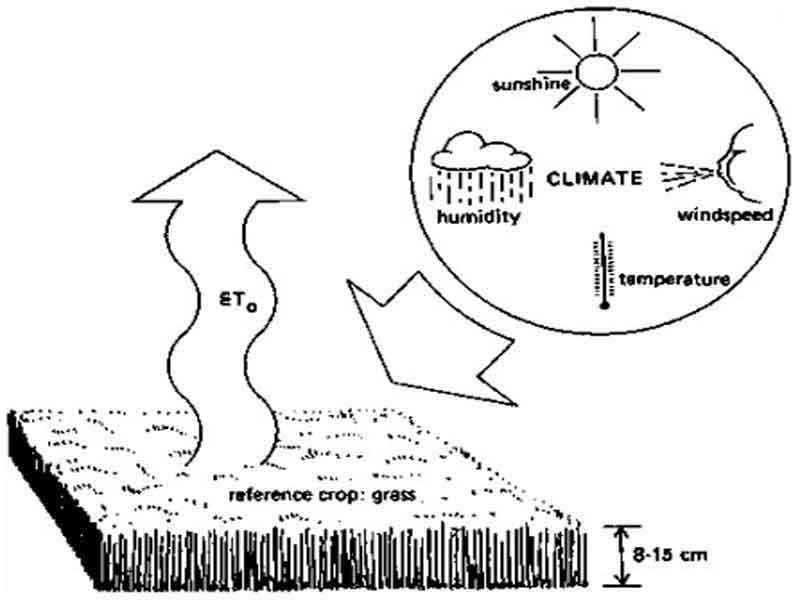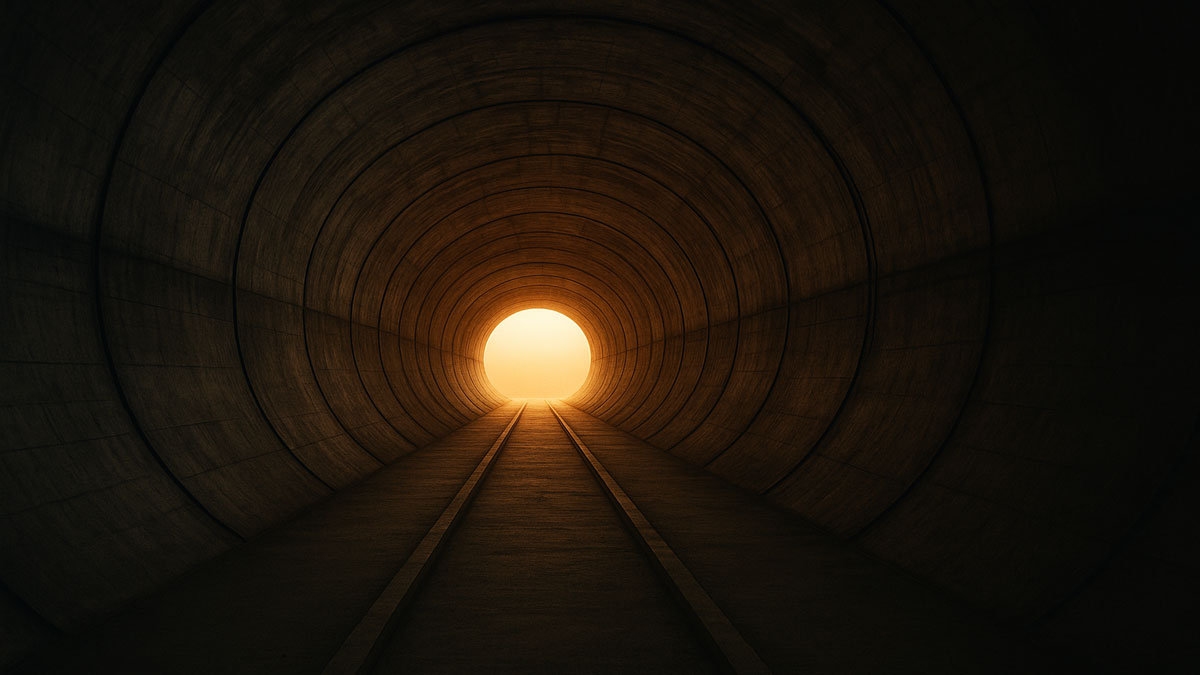Evaporation is important in the water cycle and affects our daily lives. From drying clothes to cooling the body through sweat, evaporation is a phenomenon we frequently encounter.
What is Evaporation?
Evaporation is the process by which water from a liquid or solid state passes into a vapor state and is diffused into the atmosphere. It occurs from both open water surfaces and soil surfaces, but It is from free water surfaces and soil and is essential in hydro-meteorological studies. It is expressed as the depth of water in mm escaped from a unit area at a given time, such as mm/h, mm/d, or mm/month. To enable evaporation, you need three key elements: a water supply, a heat source, and a vapor pressure deficit.
Factors Affecting Evaporation:

Several meteorological and physical factors affect the rate of evaporation from a water body.
Meteorological factors are:
- Radiation,
- temperature,
- humidity,
- wind and
- atmospheric pressure.
Physical factors are:
- water quality, and
- The dimensions and configuration of the surface from which evaporation occurs.
Measurement of Evaporation:

Though it is possible to estimate evaporation in several ways, accurate estimates may not be possible due to the non-availability of required data. So it is essential to measure evaporation for planning purposes. It is usually measured by atmometers or evaporation pans, also known as evaporimeters.
Atmometers:
The atmometers are provided with some unique surfaces that are kept wet, and evaporation takes place from these surfaces. The water loss observed at the source is an indication of the evaporation. Two different types are used.
Livingstone Atmometer:
This consists of a 5cm diameter spherical surface of 2.5mm thick, porous materials. So It is filled with distilled water and connected to a supply reservoir by a capillary tube. The drop in water level at the supply reservoir serves as an indicator of evaporation.
Piche Atmometer:
It comprises a graduated glass tube 1.5cm in diameter and 30cm long with one open end. The container is filled with distilled water and sealed at the open end with filter paper. The metal clip secures the filter paper in place. The tube is kept inverted position, so water wets the filter paper and evaporates. So the water loss in the tube is recorded as a measure of evaporation.
Evaporation Pans:
Sunken Pan:
- It is 183 cm in diameter and 61 cm deep and is used by the United States Bureau of Plant Industry (USBPI).
- They are usually buried in the ground so that they protrude only 5-15cm above ground level, and the water level is kept close to ground level (±15mm).
- Evaporation is measured using a pointer gauge in a stilling well outside the pan.
- The Colorado built-in sink has a square shape with an area of 91.5 cm² and a depth of 46 cm.
Floating Pan:
- The floating pan used by the United States Geological Survey (USGS) is 90 cm2 and 45cm deep.
- The pan is attached to a floating raft (supported by a drum float) that floats on the water.
- The water level in the tank is maintained at the same height as the water level in the adjacent reservoir.
- The rim of the pan is positioned 7.5 cm above the water line.
- The amount of water lost in the pot through evaporation is determined by the amount of water needed daily to bring the water level back to its original mark.
- Pan coefficient is 0.80.
Surface Pan:
- The most common type of evaporation pan available.
- because In most countries, the surface pan conforms to the standard United States Weather Bureau (USWB) Class A land pan.
- The item features a diameter of 122 cm and a depth of 25.4 cm, crafted from unpainted galvanized iron.
- It is installed 15cm above the ground level over a wooden frame. The space below the wooden frame permits the free circulation of air under the pan.
- Filling is done to a depth of 20 cm, and the water level is measured daily using a hook gauge in a stationary tank.
- Evaporation is computed as the difference between observed levels adjusted for precipitation.
- The pan coefficient is 0.7 (can vary between 0.68 to 0.8 seasonally).
Evaporation from Soil:

If saturated, it behaves like water
- The evaporation rate is about 90% of the maximum possible
- Relying on solar energy and the vapor pressure of the atmosphere.
- Occurs for 1 to 3 days
- Depending on weather and soil
If the surface is not saturated:
- Evaporation in soil profile
- Air in soil pores ~es
Evaporimeter Network:
Daily evaporation measurement is part of the hydrometeorological network. So, the World Meteorological Organization (WMO) suggests establishing a basic network of evaporimeters as a minimum requirement:
- Region I: Arid Zones – one station for every 30,000 km2
- Region II: Humid temperate regions – one station for every 50,000 km2
- Region III: Cold regions – 1 station per 100,000 km2.
Evaporation Reduction from Water Surface:
- Minimizing surface area: The amount of water that evaporates correlates directly with the area of water exposed to the air. It is possible to reduce evaporation by reducing surface area, which can be achieved by:
- Constructing reservoirs with a minimum ratio of area to storage.
- Storing water below ground.
- Storing water in one large reservoir instead of several small reservoirs.
- Selecting the proper reservoir site; and
- Straightening stream channels and thus reducing the meandering of surface areas of water.
- To enhance the area around the reservoirs, So we can plant tall trees on the windward side.
- By allowing the flow of water, the temperature is reduced, and evaporation is reduced
- By removing water-loving weeds and plants from the edges of the reservoir.
- Mechanical covers: This method can be applied to small reservoirs. The covers include roofs, rafts, windbreaks, wax blocks, lightweight concrete blocks, polyethylene sheets, etc.
- Suppression evaporation by surface films: Certain polar compounds can suppress evaporation.
- These compounds form a thin (less than a micro-cm), invisible film that does not exhibit interference patterns of colors associated with oil films.
- The absence of tiny wavelets characterizes the presence of the film on the surface of water.
- The film is penetrable by raindrops but closes again after being broken.
- The effectiveness of such layers depends on factors like wind action, method of application, and oxidation or degradation by microorganisms.






